OldSpeak
Faith in Faith: The Gospel According to Disney
By Jayson Whitehead
December 15, 2004
When the Southern Baptist Convention voted to officially boycott the Walt Disney Company in 1997, it was the low point in an already deteriorating relationship. Coming 60 years after the debut of Disney’s first animated feature, Snow White and the Seven Dwarfs, the vote emphasized the severity of the rift between the traditional Christian community and the animation giant.
Starting with Snow White (1937) and continuing through much of Walt’s reign (which ended with his death in 1966 and The Jungle Book the following year) and into the early 1980s, Disney’s films were held up as exemplars by Christian conservatives. Sure, there was a marked absence of specific religious references—for example, in Pinocchio, the character Geppetto clasps his hands and gazes at the sky, but instead of bowing his head and praying to God, the old cobbler, as the song goes, wishes upon a star. When his plea is answered, a blue fairy, not an angel, descends from above to grant the wooden Pinocchio life. While the figure of Christ might be missing, the values—faith in something greater than oneself and in Pinocchio, in particular, a stern sermon against telling lies—were always reaffirmed in films like Dumbo, Bambi and Peter Pan.
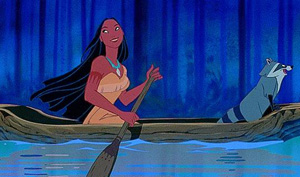 |
At the dawn of the 1990s, however, discord crept in between the traditional Christian community and Disney. While an increasing pantheism in movies such as Pocahontas troubled some religious leaders, much of the disapproval had to do with elements outside the actual animated films and primarily concerned Disney’s embrace of the gay and lesbian community. For example, an informal one-day event organized in 1991 for gays at Orlando’s Magic Kingdom theme park (known as “gay days”) gained in popularity; Disney subsidiary Miramax released the film Priest, which depicted a homosexual clergyman; and ABC aired Ellen, which featured the very public “coming out” of the show’s main character, whose star Jerry Falwell publicly derided as “Ellen Degenerate.” In 1995, when Disney announced they would extend health benefits to partners of gay and lesbian employees and their dependent children beginning in January 1996, the Southern Baptists reacted vehemently.
Today, as the head of Disney and the single person most identified with the strain, Michael Eisner, struggles to hold onto power, some of the Southern Baptists’ torpor seems to have died down or at least to have been redirected. The rise of Pixar and the elimination of most of Disney’s animation units in the wake of their commercial failure (did anyone go see Treasure Planet or Return to Neverland?) may signal the end of the hand-drawn Disney films. That development provides an occasion to look back at the Disney canon, in particular the films helmed by Walt Disney that, minus The Little Mermaid and The Lion King, are still largely identified as the face of Disney.
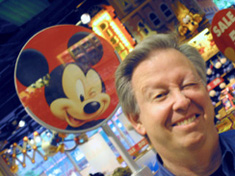 |
In The Gospel According to Disney, Orlando Sentinel religion writer Mark Pinsky analyzes many of Disney’s features from the first, Snow White, to the most recent, last year’s Brother Bear, and identifies a uniform philosophy that Walt intended to enunciate. It is a philosophy that has continued to dominate the animated films, for the most part, even through the last 20 years of Eisner’s command. Previously the author of The Gospel According to The Simpsons, Pinsky finds that much of what made its way into Walt’s films was a result of his harsh upbringing and an astute business sense. oldSpeak recently spoke with Pinsky about Walt Disney, the breakdown in relations between his company and the Christian community and what the films continue to communicate.
JW: What spurred you to write The Gospel According to Disney?
Mark Pinsky: What compelled me to write the book was my experience as a parent. My children are now teenagers, but when they were toddlers back in the ‘80s, we used to watch the movies. In some cases, it was the second or third time I had seen some of these full length animated features, and in other cases it was the first time. I had seen the newer ones in particular, and what struck me was that there were messages—some pretty profound—in these films.
JW: Particularly in the early ones?
MP: No, they were pretty profound in all of them. But some of the early ones have aspects that were troubling to me in terms of the way certain people in groups were depicted, such as African-American and Native American people. So there were times I would just stop the tape and say to my children that this is the way people were looked at once in this country. They weren’t portrayed this way to make fun of them particularly; it was just the way people thought. I didn’t take the film out of the VCR because there were other larger messages that I really liked and thought were very positive.
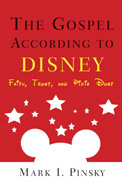 |
When I changed jobs—from the L.A. Times to the Orlando Sentinel—I thought this would be a good time to revisit that issue. So the first piece I wrote for the Orlando Sentinel in 1995 explored the issue: “Is there a Disney Gospel?” And since I was moving to a position as a religion writer, it struck me that there was this whole body of work—what we would normally consider religious values—but there was no explicit religious context for these values.
I thought that was curious so I began to research and found out that there were basically two reasons. One, Walt and his brother Roy had a difficult time as boys in their home, which was what we would today call a fundamentalist home. Their dad was very rigid and beat them, and I think in many ways beat the religion out of them—the organized religion but not the values. I think that is why Walt, throughout his adult life, did not want explicit religious symbolism in the full-length animated films. But there was also a commercial reason. From the very beginning, they wanted to sell the cartoons and films around the world, which included Latin America and Europe, but also North Africa and Asia. And Walt figured that if the agent of supernatural intervention—which all fantasy requires—was religious, it might exclude kids from different cultures. And if you exclude the kids, then you exclude the customers. So that decision was made and pretty much adhered to for all the time that Walt lived.
JW: Walt Disney’s films seem very representative of the time in which they were produced, a post-World War II thriving America that in hindsight reinforced religious values. But the person of God specifically didn’t seem to have a large presence.
MP: In my book, I cite Will Herberg’s book Protestant, Catholic, Jew, which was written in 1955. His thesis was that America’s civic religion was faith in faith—that is to say, faith in a nonspecific, nonsectarian faith. Or, as Eisenhower put it, “I don’t care what you believe in as long as you believe in something.” That was a post-World War II ethos—the American ethos—just believe in something. So Jesus and Christianity, and Judaism to a lesser extent, were sort of pushed over to the side in favor of a unifying cultural mood that the country was in, a kind of humanist or proto-humanist mood. Or, as Time magazine called Walt, “the prince of American humanism.”
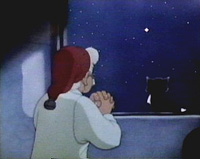 |
People spotted that very early on, from 1937. More devoted Christians noticed the tradeoff—that magic was essentially substituted for the Holy Spirit. But because there was nothing else of quality at that level which also enhanced values, they basically made the bargain, well, we can live with it. Despite the fact that it is not our faith and despite the fact that it doesn’t include our faith, its values are not in opposition to our faith. The values are good, even if the theology is nonexistent or, in some cases, a little troubling. In all the literature that I reviewed from the ‘30s and ‘40s and even into the ‘50s, it wasn’t that people didn’t notice it. People did notice it, particularly ministers and theologians, from the beginning. But some of the more subtle ones noticed that there was a sort of implicit, never explicit, Christianity to these films. The symbolism was really small and marginal and not at the center. But if you looked, the understood context was really Western Christianity.
JW: You identify two main factors, one financial and the other personal, for why Walt excluded specific religious references in his films. But he also seemed to personally believe what you describe—the faith in humanity and just being positive.
MP: I think he believed that he was an exemplar of the American story, and that is reflected in almost all his films. That is, if you work hard, if you have faith in yourself, if you have faith in something greater than yourself, then you will succeed because he did. And that, in a sense, is why he created the Main Street in Disneyland and now Disney World after he died. It was a recreation of an early 20th century Middle America, which he thought embodied the values that made the country great and in a sense made him great. He was grounded in those values.
JW: While Walt avoided using specific religious references, oddly enough in the 90’s Hindu teachings are in The Lion King and Christianity is addressed in The Hunchback of Notre Dame.
MP: Yes, you have this ironic thing that Walt eschewed specific religious symbolism. Then you have the Michael Eisner/Jeffrey Katzenberg regime, which has Shamanism in Brother Bear, Animism in Pocahontas, Confucianism in Mulan and arguably, although not specifically, Hinduism in Lion King and Christianity in Hunchback—which I see as the most explicitly Christian film that the Disney Studio ever made.
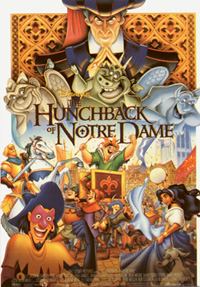 |
Walt would have probably resisted this, but one could argue that there is something commercial that argues in its favor. As the country becomes more explicitly Christian and evangelical, a movie like Hunchback might work to its favor. We know, for example, that Mulan did very well in China, post-Communist China. Now Shamanism doesn’t have a big following and neither does Animism, but one could also argue that in the move for more multiculturalism, maybe there is an audience there for that. I don’t want to say it is completely altruistic or completely self-defeating. There may have been a self-interested commercial component to doing that.
I think I would argue with the Baptists on this. I don’t think Disney gets ahead of the culture—I think Disney really tracks the culture. You can’t make money in the mass media by being ahead of the culture. If you look, for example, at the emerging role of young women in the films under Eisner and Katzenberg, beginning with Beauty and the Beast, you see a more assertive role, not like the earlier ones where a latent Princess or secret Princess was waiting to be rescued from some active Prince. That is difficult to separate from the commercial aspect because, for some reason, Disney lost its ability to reach young boys as an audience, making its core audience young girls. So it was both—I would argue—tracking the changes in the culture but also keeping its eye on the main chance.
JW: So Eisner and Katzenberg were duplicating what Walt had done by matching financial concerns with personal?
MP: In part. In one of the DVD extras, Walt says that one of the reasons he felt Alice in Wonderland failed at the box office was that she was too passive. She was not active enough. I think even decades before anybody thought about the role of women, Walt was at least peripherally aware that this was an issue. But, for all his genius, he loved Fantasia, and it was a flop. It was not where people wanted to go.
JW: You quote Reverend Robert Schuller quite a bit in your book. He and Walt seem very similar.
MP: Absolutely, if you see Schuller as an heir to someone like Norman Vincent Peale, for example, the power of positive thinking. It’s a kind of “uplift” theology. You should work hard, try to do better, try to overcome obstacles. But not a lot of Jesus, not a lot of the Holy Spirit, not a lot of resurrection and crucifixion.
JW: Basically nothing offensive.
MP: Correct. I call it the gospel of optimism, and I think that it is very consistent with Walt. The preacher Walt said he really liked was Billy Graham, who had a solid theology but whose approach was very accessible.
JW: And he always avoided speaking out on divisive issues.
MP: He was a Southern Baptist. If you asked him, he would tell you, but he didn’t preach Southern Baptist theology from the pulpit or from the stadiums.
JW: Speaking of Southern Baptists, in your chapter on their boycott, you seem to reach the conclusion that the boycott really didn’t have too much of an effect. Or, if so, it was an indeterminable one.
MP: I don’t think it had much effect. It had a lot of publicity effect at that time, and a lot of trees died for newspaper and magazine articles about it. They got a lot more mileage because the Southern Baptist Convention meets in June, which was a slow news cycle. But no, I don’t think it in any way affected the way the company did business or their fortunes. And as some of the critics within the Southern Baptist Convention warned, it basically demonstrated that they were paper tigers. They could huff and they could puff—in mixed metaphors here. But like the Big Bad Wolf and the Three Little Pigs, they huffed and they puffed, and they couldn’t blow the house down. And in every high level meeting, the thing I noticed the most and I argue in the book is that the leaders of the boycott really never thought they could turn the company around. But they wanted to be respected; they wanted their views heard in high level form. Eisner would not do that so they basically blew him off and said okay, then, we will do the boycott. But the boycott had no discernible effect.
JW: What about The Passion of the Christ and everything we hear about evangelical Christians’ role in electing Bush? I wonder if the Southern Baptists would be treated differently at this moment.
MP: I think that’s likely. I don’t know that things have materially changed that much. The anger at popular culture is directed toward the real villains—the toxic violence and sexuality you find on television and in the movies. Evangelical Christians can be very discerning, and if you have to line up your enemies, I don’t think you will put Disney at the head of the line. I just think you would want to go where the biggest threat is in TV, in movies, on the radio. Why waste your time with alleged hidden images when you have Janet Jackson and Howard Stern? The company may have acted differently, but I don’t know if the boycott would have gotten as much traction as it did—I just don’t think the Baptists would have focused on Disney. There are too many real enemies—more pressing enemies—that are really stealing their children.
JW: Well, they are focused on gay marriage or…
MP: Or gangster rap. That is a threat to their kids. I have an essay coming out in January called “Among the Evangelicals” about what I essentially learned living here in Florida for 10 years. I live in a state where both houses of the legislature are an overwhelmingly Republican Christian majority. We have a Catholic governor named Bush, and we have two houses of Congress that are in the hands of Republicans—the White House and the Supreme Court. Most of the AM radio dial is conservative Christian, at least here. But with all that, many evangelical Christians feel besieged. Why do they feel besieged?
They feel most besieged by the popular culture, which they cannot reverse at the polls. They have to confront this toxic popular culture in the marketplace, like everybody else does. That’s the flip side of the market economy. You can’t vote it out. You have to effectively come up with a better product, which I think they are doing. Look at the success of contemporary Christian music. Look at the success of The Passion of the Christ or the success of Left Behind—which is just pulp fiction, but it’s Christian pulp fiction. If you can create an alternative popular culture that meets or beats the standards, the production standards—people did not go to The Passion of the Christ just because it was a Christian movie. If it wasn’t as good as it was technically, they would not have sold a half-billion dollars worth of tickets and DVDs. It has to be good enough to survive in the marketplace. People won’t buy something just because it’s Christian.
DISCLAIMER: THE VIEWS AND OPINIONS EXPRESSED IN OLDSPEAK ARE NOT NECESSARILY THOSE OF THE RUTHERFORD INSTITUTE.


